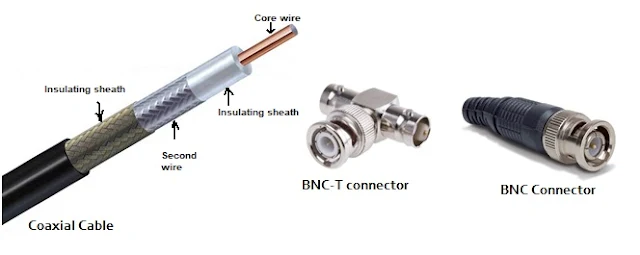Wired Media | Guided Media | Bound Transmission Media
Ø
Bound transmission media are the cables that
are tangible or have physical existence and are
limited by the physical geography.
Ø
Popular bound transmission media in
use are twisted pair cable, co-axial cable and fiber optical cable.
Ø
Each of them has its own
characteristics like transmission speed, effect of noise, physical appearance,
cost etc.
Ø
They will transmit the data in the form
of electrical signals.
1) Twisted Pair Cable:
Ø
A twisted pair cable is made of two identical
wires twisted together to form a single media.
Ø
Out of these two wires, only
one carries actual signal
(Conductor) and another is used for ground
reference (Insulator).
Ø
The twists between wires are helpful
in reducing noise and crosstalk
(Bleeding of signal from one wire to another i.e.)
ØThere
are two types of twisted pair cables:
· Shielded
Twisted Pair (STP) Cable
· Unshielded
Twisted Pair (UTP) Cable
Ø STP
cables come with twisted wire pair covered in metal foil-It is very thin
sheet of metal with aluminium, copper. This makes it more indifferent to noise and crosstalk.
Ø UTP has
seven categories, each suitable for specific use. In computer networks, Cat-5,
Cat-5e, and Cat-6 cables are mostly used. UTP
cables are connected by RJ45 connectors.
ØAdvantages:
· Simple to
use
· Easy to
install and maintain
· Cheaper
ØDisadvantages:
·
The strength
of signals goes on decreasing as they travel over long distance.(High
attenuation i.e. loss in signal so need
repeater to transmit signal over long distance)
·
Low
bandwidth
·
Data rate
ranges from 1Mbps to 10Mbps
2) Coaxial Cable
Ø Coaxial
cable has two
wires of copper(Concentric conductor)
Ø
The core
wire lies in
the center and it is made of solid conductor. The
core is enclosed in an insulating sheath.
Ø The
second wire is wrapped around over the sheath and that
too in turn encased by insulator sheath. This all is covered by plastic cover.
Ø Because
of its structure, the coaxial cable is capable
of carrying high frequency signals than that of twisted pair cable. The
wrapped structure provides it a good shield against noise and cross talk.
Ø Coaxial cables provide
high bandwidth rates of up to 450 Mbps.
Ø There
are three categories of coaxial cables namely, RG-59
(Cable TV), RG-58 (Thin Ethernet-185 meters long), and RG-11 (Thick Ethernet-500
meters long). RG stands for Radio Government.
Ø Cables
are connected using BNC connector and BNC-T. BNC
terminator is used to terminate the wire at the far ends.
ØAdvantages:
· Much better
than twisted pair cable in regards of attenuation, data rate
· Mainly used
for broadband transmission i.e. sending all
channels on same cable
· High
bandwidth upto 450Mbps
ØDisadvantages:
·
Expensive
than twisted pair
·
Not
compatible with twisted pair cable
3) Fiber Optics
Ø Fiber
Optic works on the properties of light.
Ø When
light ray hits at critical angle it tends to refracts at 90 degree. This
property has been used in fiber optic.
Ø It works
on the principle of Total Internal Reflection(TIR)
Ø
From one end of it light is emitted, it travels
through it and at the other end light detector detects light stream and
converts it to electric data.
Ø
The Optical core
of fiber optic cable is made of high quality glass
or plastic through which light travels
Ø Cladding:
Reflect light back to core.
Ø Protective
Coating (Sheath): Used to prevent cable from hostile environment.
Ø Fiber
Optic provides highest mode
of speed. It comes in two modes, one is single
mode fiber and second is multimode fiber.
Ø
Single mode fiber of 2km can carry a
single ray of light with 100Mbps whereas multimode
fiber of maximum length 100km with maximum speed 2Gbps is capable of
carrying multiple beams of light.
Ø Fiber
Optic also comes in unidirectional and bidirectional
capabilities.
Ø
To connect and access fiber optic special type
of connectors are used. These can be Subscriber Channel (SC), Straight Tip
(ST), or MT-RJ.




It is a very informative and useful post thanks it is good material to read this post increases my knowledge. Cat 6 Cable
ReplyDelete